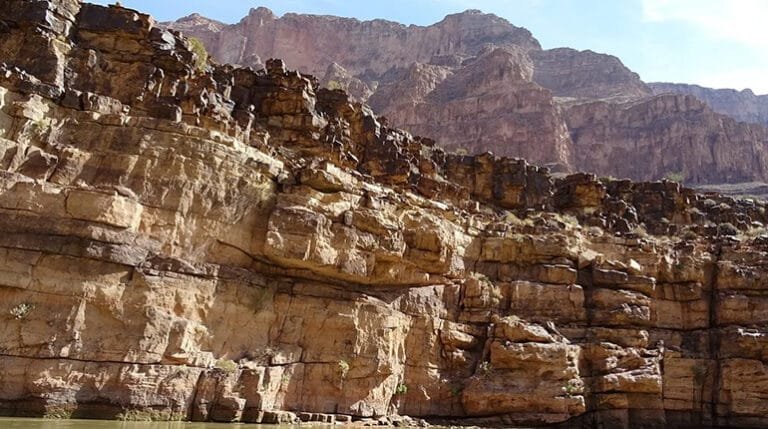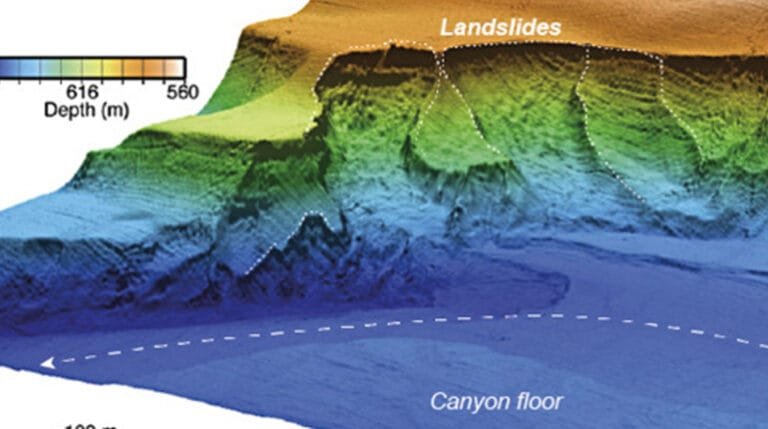Sedimentology and the Biblical Deluge

The narrative of Noah’s Flood, as described in the Book of Genesis, is considered by many Christians to be a historical event that has profound implications for understanding both biblical history and the natural world. While skeptics often view the flood as a mere myth or allegory, there exists a substantial body of evidence supporting a young Earth perspective that can reconcile sedimentology with the Biblical account. This article aims to explore the relationship between sedimentary processes and the Great Flood, examining features found in the geological record and assessing how these align with the understanding of a global deluge within a young Earth framework.
As we delve into the fields of geology and sedimentology, we must approach the study with a perspective that acknowledges the authority of Scripture while engaging with scientific observations. The geological features resulting from processes such as sediment deposition, erosion, and stratification provide a canvas on which one can explore the dynamics of a worldwide flood. By examining these processes, we can elucidate how they potentially align with the historical account of Noah’s Flood, affirming the order and methodology that a Creator could employ in shaping the earth over a short timescale of approximately 6,000 years.
The Nature of Sedimentology
Sedimentology is the study of natural sediments—liquid, solid, or gaseous materials that are transported and deposited by various agents such as water, wind, or ice. This field investigates the origin, transport, and deposition of materials, as well as the processes and timeframes involved in sediment formation. Understanding sedimentology is critical for interpreting the geological record, including features such as sediment layers, fossil remains, and the patterns of erosion and deposition observed today.
Principles of Sediment Formation
To comprehend how a global flood could potentially create or influence sedimentary deposits, it is vital to understand several key principles of sediment formation:
- Weathering and Erosion: The processes that break down rocks and minerals into smaller particles. Erosion occurs through the action of water, wind, or ice.
- Transport: Once sediments are broken down, they can be transported by moving water, wind, or glaciers. This movement can lead to the accumulation of sediments in low-lying areas.
- Deposition: Sediments are deposited when the energy of the transporting medium decreases, allowing particles to settle out. This is a fundamental component of sedimentary rock formation.
- Lithification: Over time, deposited sediments can become compacted and cemented, forming sedimentary rocks that can preserve evidence of past environments, including fossils.
Exploring Geological Evidence of a Global Flood
Many young Earth creationists argue that evidence for a worldwide flood is found throughout the geological record. Such evidence can be categorized into direct and indirect indicators.
Direct Indicators
Direct indicators of a global flood include large-scale sedimentary formations that display certain characteristics suggestive of rapid deposition. Examples include:
- Marine and Terrestrial Interfaces: The presence of marine fossils alongside terrestrial fossils in the same sedimentary layers suggests a rapid inundation process, as terrestrial animals would not be found in deep marine sediments if they had been separated by vast timescales.
- Extensive Coal Deposits: Coal seams often show widespread deposits of organic material that could have been deposited rapidly under conditions of a global catastrophic flood.
- Subaqueous Landslides: Features resembling turbidites or sediment gravity flows can indicate massive underwater landslides, which may have been triggered by tectonic upheaval related to Noah’s Flood.
Indirect Indicators
Indirect indicators include sedimentary structures that might infer the effects of a flood:
- Ripple Marks and Cross-Bedding: The presence of ripple marks and cross-bedding in sedimentary rocks implies dynamic water flow, potentially indicative of significant flooding events.
- Fossil Unconformities: Unconformities show gaps within geological strata that could represent long periods of erosion, possibly reflecting episodes of rapid geologic change.
- Polystrate Fossils: Fossils of trees or other vegetation that extend through multiple sedimentary layers indicate rapid sedimentation, suggesting that these organisms were buried quickly, possibly during a catastrophic event.
Rapid Sedimentation and its Implications
The framework of a global flood presents a unique scenario for sedimentation, as temporal scales are drastically reduced compared to uniformitarian models. Rapid sedimentation can result from catastrophic events rather than slow, gradual processes:
- Flood Dynamics: In the case of Noah’s Flood, the movement of waters described in Genesis could have produced substantial and chaotic sedimentary environments, leading to widespread sediment deposition across continents.
- Effects of Tectonics: The initial phases of the flood may have included tectonic shifts that created new basins for sediment accumulation, along with uplifting that contributed to the distribution of sediments.
- Water Volume and Erosion: The volume of water involved would likely result in significant erosion of the landscape, generating extensive sediment transport and deposition across vast areas.
Alignment with the Biblical Narrative
Considering the sedimentological evidence alongside the Biblical narrative of Noah’s Flood offers a compelling case for its historical reality. The Bible describes the flood as covering “the earth” and “all the high mountains under the entire heavens” (Genesis 7:19), implying a global perspective of flooding.
This interpretation can be supported by key sedimentological features:
- Stratigraphic Evidence: The global distribution of sedimentary layers containing marine fossils across continents supports the notion of a significant, widespread inundation.
- Index Fossils: The presence of identical fossilized species in geographically disparate locations can be attributed to flooding events which would unify these regions through water transport.
- Global Sedimentary Units: The notion of tied sedimentary sequences across various regions suggests a relatively recent and rapid sediment-laden event, consistent with the flood narrative.
Contending with Uniformitarianism
Uniformitarianism—the principle stating that “the present is the key to the past”—has dominated geologic thought for much of the modern era. However, a biblical worldview posits that significant catastrophic events can shape the geological record. Thus, the phenomena observed in sedimentology can be accounted for within the context of a straightforward, global flood.
The rate of sedimentation, fossil deposition, and the incredibly complex geological features documented today speak to the necessity of acknowledging shorter timescales for significant geological activity, as proposed by a literal interpretation of biblical accounts.
Conclusion
In summary, the sedimentological evidence examined through the lens of a young Earth perspective provides substantial support for the historicity of Noah’s Flood as described in Scripture. The interconnectedness of rapid sediment deposition, paleontological records, and observable geological features warrants further exploration and understanding. Through such a lens, believers can reinforce their faith by appreciating the harmonious relationship between biblical narratives and the natural world’s geological record. The implications of the flood narrative extend beyond mere history; they speak to the power of divine intervention in shaping the earth as understood within the traditions of faith. Emphasizing a commitment to truth, we encourage ongoing dialogue between faith and science to enrich our understanding of God’s creation.





